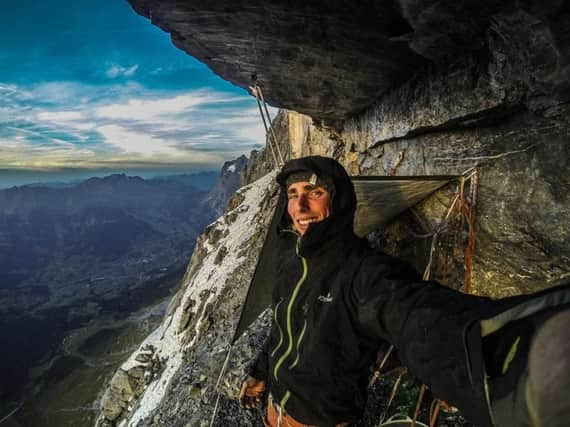Roger Cox: Fear and courage on Yosemite's formidable El Capitan


It was, “not just another big rock climb for me to tick off the list” but a “game-changer” and “the biggest rock climb I’ve ever done”.
For all his enthusiasm, however, six-days on one of the most dramatic and instantly-recognisable monoliths in Yosemite National Park took its toll: Phillips subsequently posted a picture of himself and Cook taken towards the end of their adventure, suspended from the almost vertical wall looking utterly exhausted. “A very broken pair of Yosemite dirtbags” read the caption. Like post-combat GIs in a Robert Capa photograph, their thousand-yard stares spoke not just of physical tiredness, but also of the deep mental fatigue caused by prolonged periods spent wondering if your next mistake might be your last.
Advertisement
Hide AdAdvertisement
Hide AdAs previously reported in this slot, Phillips has made some serious ascents in recent years, even ticking off the notoriously difficult Paciencia route on the Eiger last summer, which has only been climbed by a handful of people since Swiss climber Ueli Steck made the first ascent in 2008. The El Niño climb, however, was a tougher proposition.
“The climbing on El Cap was more consistently hard throughout the entire wall,” says Phillips. “There were about six pitches that were at least as hard as the hardest pitch on the Eiger, so although you weren’t always necessarily in a scary situation, I think the climbing difficulty made up for it.”
Another consideration was the sheer size of the route, and the logistics that entails – Phillips and Cook set out to climb El Niño in six days, which meant hauling 60kg of gear with them as they went and setting up camp on a portaledge each night, perched above the abyss.
As Phillips sees it, however, perhaps the biggest challenge of all was winning the psychological battle – staying calm and focused for hours on end, day after day, with plenty of time to ponder the ever-growing void beneath your feet.
“When you’re on the wall your brain never really shuts off because you’re constantly thinking about what you’re attached to,” he says. “Nothing can be unattached – you’ve got to be attached, you’ve got to make sure your friend’s attached, you’ve got to make sure the bags are attached, you’ve got to make sure that you’re keeping everything secure – especially when you’re hauling bags that are 60 kilos up with you.”
“The longer you spend up there the more comfortable you get,” he reflects, “but I think there’s also a risk to that, because if you get too complacent you can make mistakes. Also, if you’re just terrified all the time, which it’s very easy to be on these walls, then I think it just burns up a lot of energy – a lot of mental energy.”
There was one moment, Phillips says, when the enormity of the situation got the better of him. About half way up the climb is a feature called the Black Roof – a severe overhang on a section of the face known as the North American Wall.
Advertisement
Hide AdAdvertisement
Hide Ad“You’re in this amphitheatre with 500m of air below you and this roof above you and it’s all dark and scary and really intimidating. I led the four pitches up to the roof and every pitch felt like... the situation, the exposure really got to me. That was the factor that I found most challenging about that section of the climb. I felt like this really tiny little speck of a thing on this wall. Even though you can look down and see people on the ground, you feel on your own – it’s a really weird feeling.
“I got to the final pitch that led out onto the roof – the hardest pitch of that whole section. I started climbing it but then I stopped and came down. My head was just totally gone because I’d just led so many pitches which were really just... terrifying. I felt like I’d burned all my calories that day just being scared.”
The pair decided to put up their portaledge, get some rest and try again in the morning.
“We spent the night there and in the morning I felt a lot better to do that pitch and then did it first time,” says Phillips. “After that the rest of the climb didn’t feel anywhere near as terrifying , even though there was still a lot of hard climbing left to go.”
Next for Phillips: the formidable granite spires of British Columbia’s Bugaboos in August, then back to Yosemite for another El Cap climb, the Pre-Muir. Does he have the famous Dawn Wall in his sights? “An apprenticeship is definitely required,” he says, “but for sure it’s something I’m really interested in.”
robbiephillips.co.uk